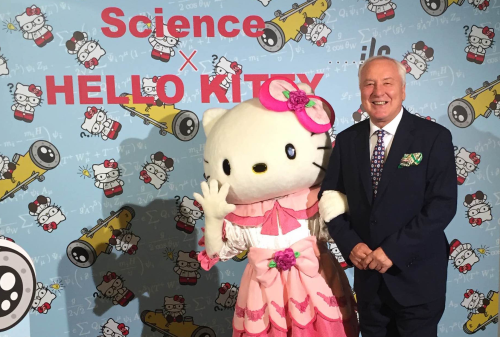By Matin Durrani
Today marks the end of Peer Review Week – a “global event celebrating the essential role that peer review plays in maintaining scientific quality”. The event brought together “individuals, institutions and organizations committed to sharing the central message that good peer review, whatever shape or form it might take, is critical to scholarly communications”.
It’s probably fair to say that Peer Review Week – now in its second year – didn’t quite have the media profile of, say, London Fashion Week, but then you have to start somewhere. And celebrating peer review seems a worthy and worthwhile thing to do. I bet even Rio de Janeiro’s Restaurant Week started out small.
Among the events you might have missed was a webinar on peer review from the Council of Science Editors, a panel discussion, and a live Q&A on Twitter with Jamie Hutchins, publishing director of IOP Publishing, which publishes physicsworld.com. Hutchins was answering a range of common questions about the process of peer review and his vision for how it can be improved. Among the highlights was the advice he gave to first-time reviewers and his thoughts on how publishers can engage more effectively with the reviewer community through regular surveys. In case you missed the live chat – via the @IOPPublishing Twitter account and the hashtag #askIOPP – you can catch up with the event summary on Storify.
Another item that caught my eye was a piece by Yajing Xu, a neuroscience PhD student at University College London. Writing on the F1000 biosciences blog Naturally Selected, Xu offers a succinct summary – from a non-physics viewpoint – of the different types of peer review and the trend toward more openness in peer review. Her piece was written after she attended a workshop on peer review held recently by Sense about Science. The organization has published a useful guide for members of the public to explain why peer review is important to help them evaluate competing claims from researchers and to understand how good science is done.
The elephant in the room when it comes to peer review has always been: why don’t academics get paid for their services? This Tweet from Shit Academics Say reflects some of those concerns. Why, scientists argue, should they do peer review for no pay – especially for profit-making publishers – when one would expect financial reward for other “consultancy services” that take time and effort?
As I mentioned in an editorial in the February issue of Physics World magazine, paying peer reviewers is a bad idea because peer review is based on trust. As Robert P Crease noted earlier this year, the peer-review system is a delicate balance between authors, editors and referees, with scientists playing all three roles throughout their careers.
Apart from thorny impracticalities – who should be paid, how much and by whom? – introducing payments would distort the system and be open to abuse. It’s because the peer-review system is such a delicate balance of competing interests that we have to be careful when changing it. Reforms, such as paying reviewers, might sound great – and even obvious – but they can also have unexpected and corrosive effects, so it pays to be cautious.

Hello Kitty: Linear Collider Collaboration director Lyn Evans meets and greets. (Courtesy: ILC)
And finally, before we all get too serious, we were pleased to see this week that officials at the International Linear Collider – a proposed successor to the Large Hadron Collider at CERN that is set to be built in Japan – have come up a clever way to secure more backing for the project. To tackle its huge costs, they’ve turned to Hello Kitty to help promote the collider.
Unless you’ve had your head buried under a cultural stone, you’ll know that Hello Kitty is a fictional cat character produced by the Japanese company Sanrio whose merchandise is sold in more than 70 countries. Well, if you didn’t fancy a Hello Kitty scooter, soft toy or suitcase, you can get your hands on a Hello Kitty ILC paper folder, in which the cat is sat on an ILC cryomodule with equations in the background.

It wll be worhwhle to know as to how the number of “complaints” of the aurhors vis a vis their their paper reviewers, has been effected by this compaign of PRW for the last year compared to the average number over the last few years.
Any sign of progress in the art of peer reviewing of articles due to the Peer Review Week beyond the act of blogging?
The ILC might also recruit appropriate support from other popular Japanese characters. Super Mario often travels through pipes which resemble an ILC cryomodule, and he packs a powerful punch. Mario could be shown zooming through the ILC to deliver shattering blows to elementary particles. The ILC itself could be powered with the aid of Pikachu, an electric Pokemon. Perhaps the ILC’s PR people should talk to Nintendo about sponsorship.